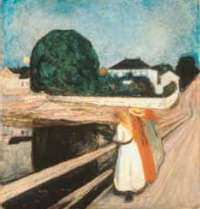until January 23rd 2000 | | Disegni cremonesi del Cinquecento...
The exhibition at the Gabinetto Disegni e Stampe of the Uffizi, will be held until January 23rd 2000. A good way to meet the extraordinary talent of sophisticated designers
dal 7 ottobre 1999 al 9 gennaio 2000 | At Buonarroti’s...
This art exhibition celebrates the undisputed genius of universal art. It tries to make clear all the steps of artist growth, nowadays rather unknown, that preludes the Michelangelo’s genius explosion
30 ott 1999 – 13 feb 2000 | | A...
Sala Bianca di Palazzo Pitti, Piazza Pitti 1, Firenze
Until February 13th
Opening: Tue - Sun 8.30 AM 6.50 PM, Closed on Monday; 14.000 Lire
Info: Firenze Musei 39 055 2654321
Until February 13th
Opening: Tue - Sun 8.30 AM 6.50 PM, Closed on Monday; 14.000 Lire
Info: Firenze Musei 39 055 2654321
16 aprile 1999 – 2 maggio 1999 | “Dieci Nobel per...
“Dieci Nobel per il futuro” (Ten Nobel Prize-winners for the Future) is the most remarkable event in the next months. It is dedicated to important topics in science, economics and ethics, and ten Nobel prize-winners will be taking part. Milan will host these personages on five occasions at different times in the year. There will be meetings and discussions with the Press, the business community, local government officials, figures from the world of culture and students
Milan: Leonardo Da Vinci: «Dama dell’ermellino»
Raffaello's «Velata» and Tiziano's «Venere di Urbino» will exhibit at the same time in Cracow. «The idea - said Veltroni - was born one year and a half ago during a trip to Poland. There I met the President of the Republic, Kasniewski, who immediately loved my proposal».
The painting, realized on an extremely thin walnut table, was purchased by the Polish Prince Adam Jerzy Czartoryski around the year 1800, during his travels to Italy.
He then donated it to his mother Isabel, who was working at the creation of the first national Polish museum in Pulawy.
The painting, realized on an extremely thin walnut table, was purchased by the Polish Prince Adam Jerzy Czartoryski around the year 1800, during his travels to Italy.
He then donated it to his mother Isabel, who was working at the creation of the first national Polish museum in Pulawy.













